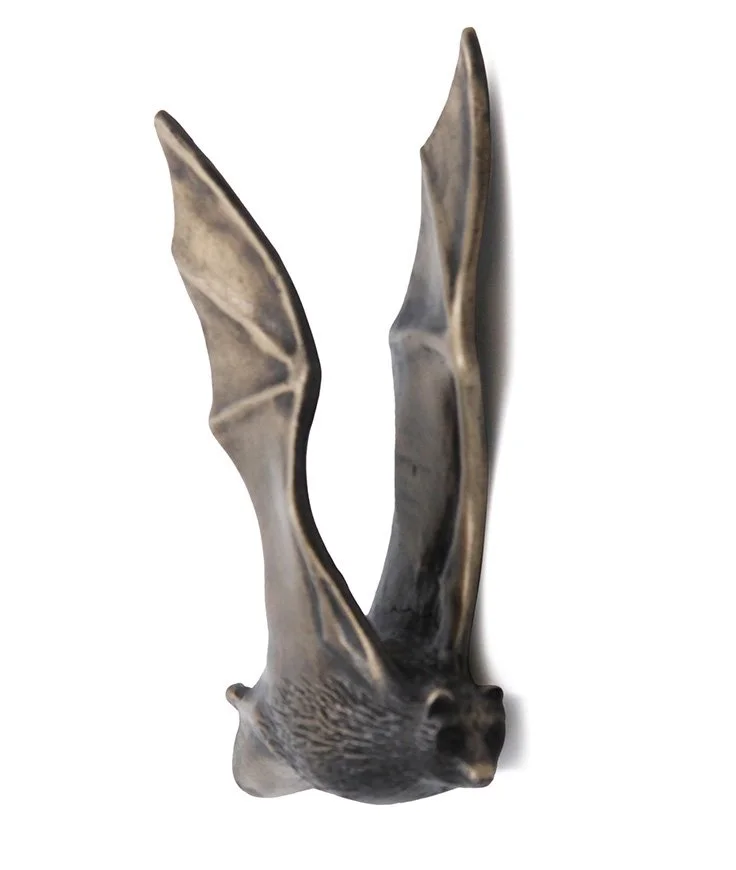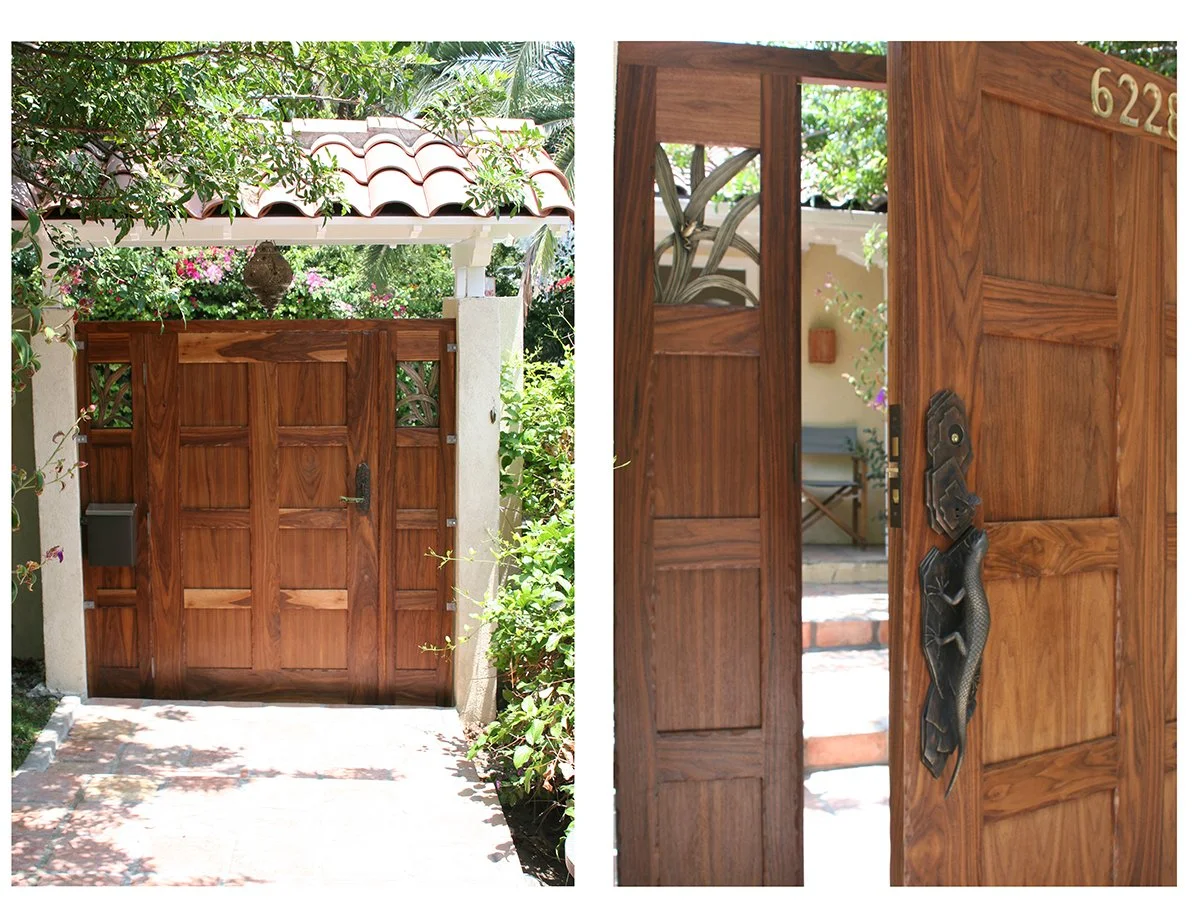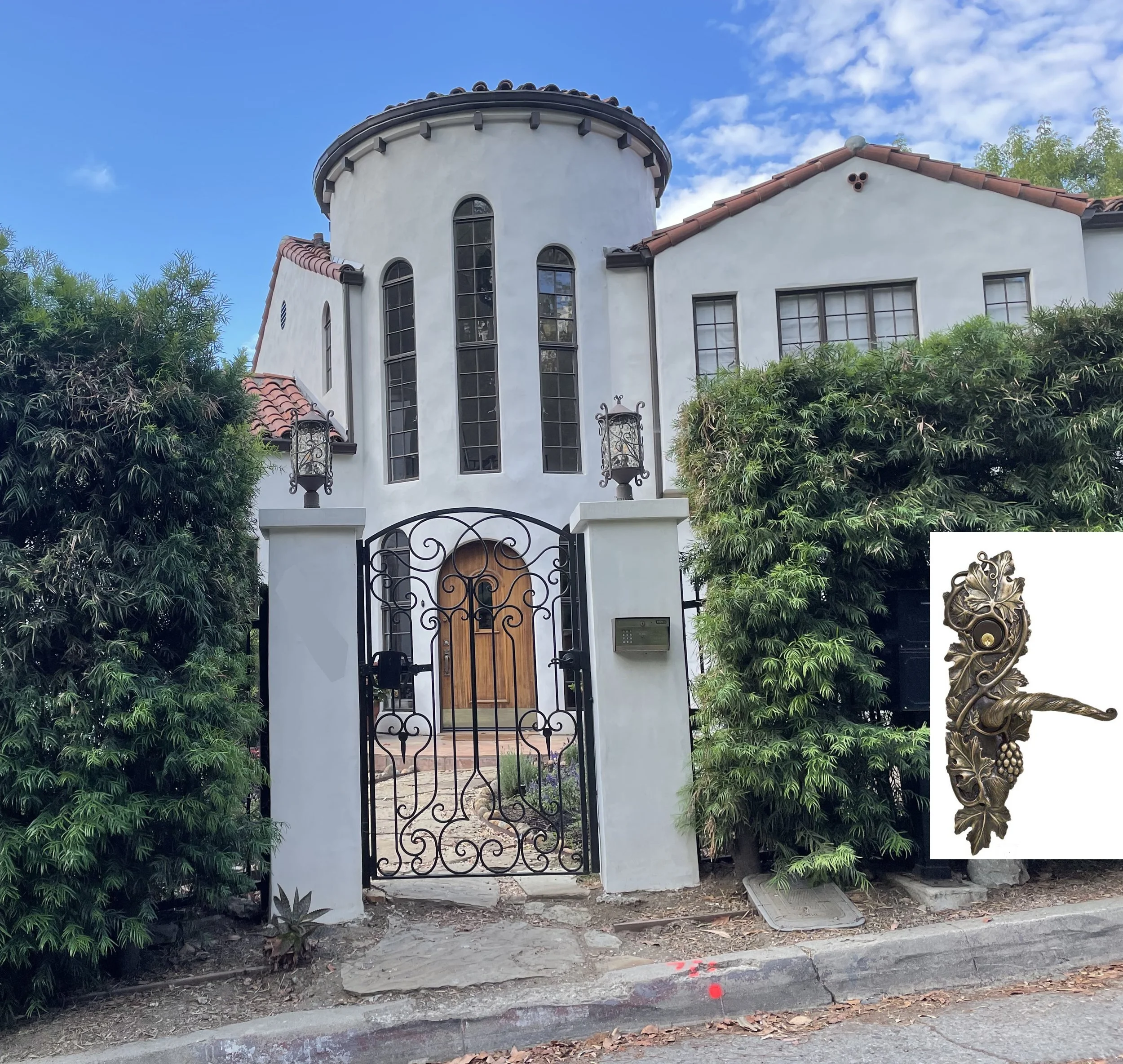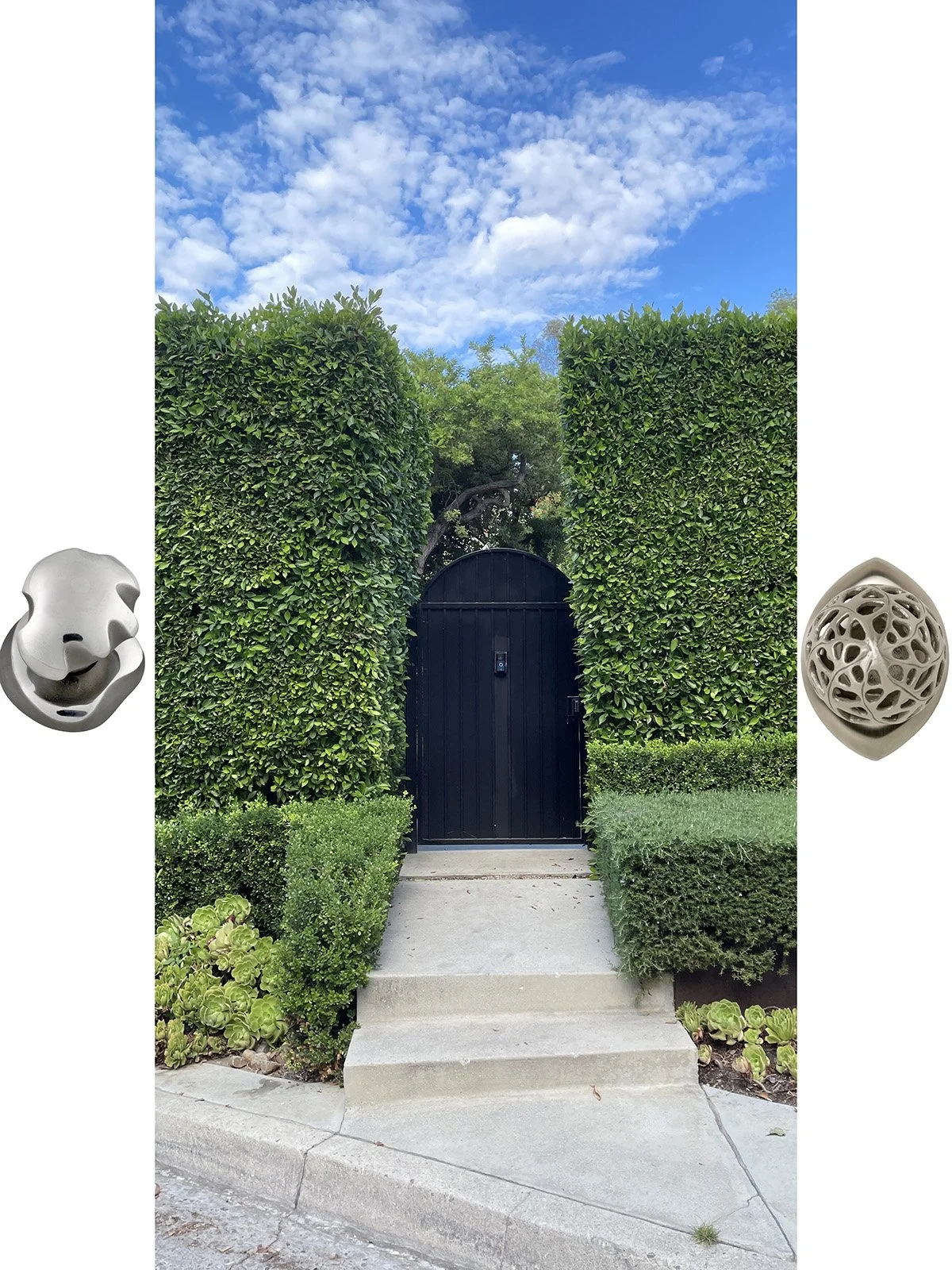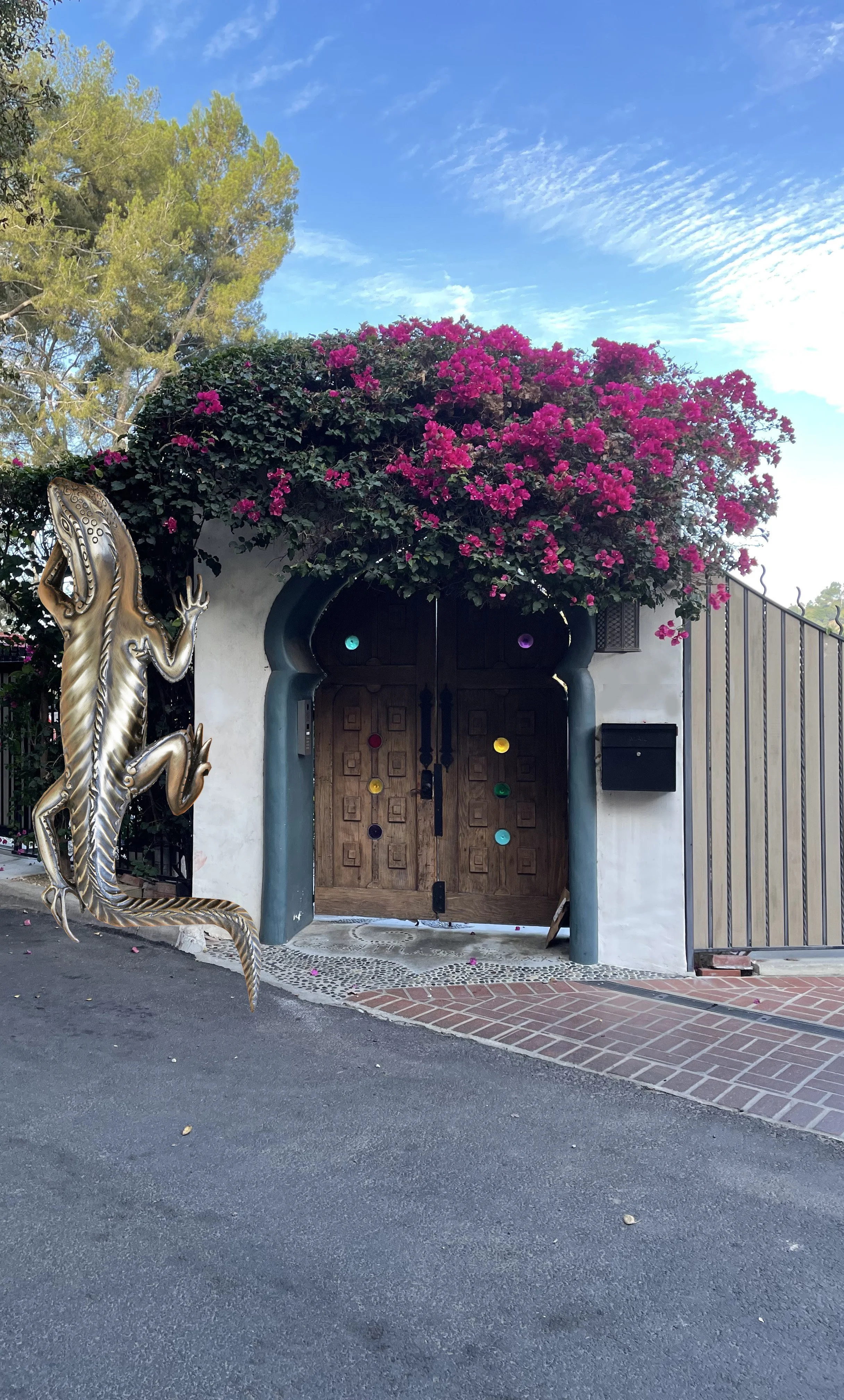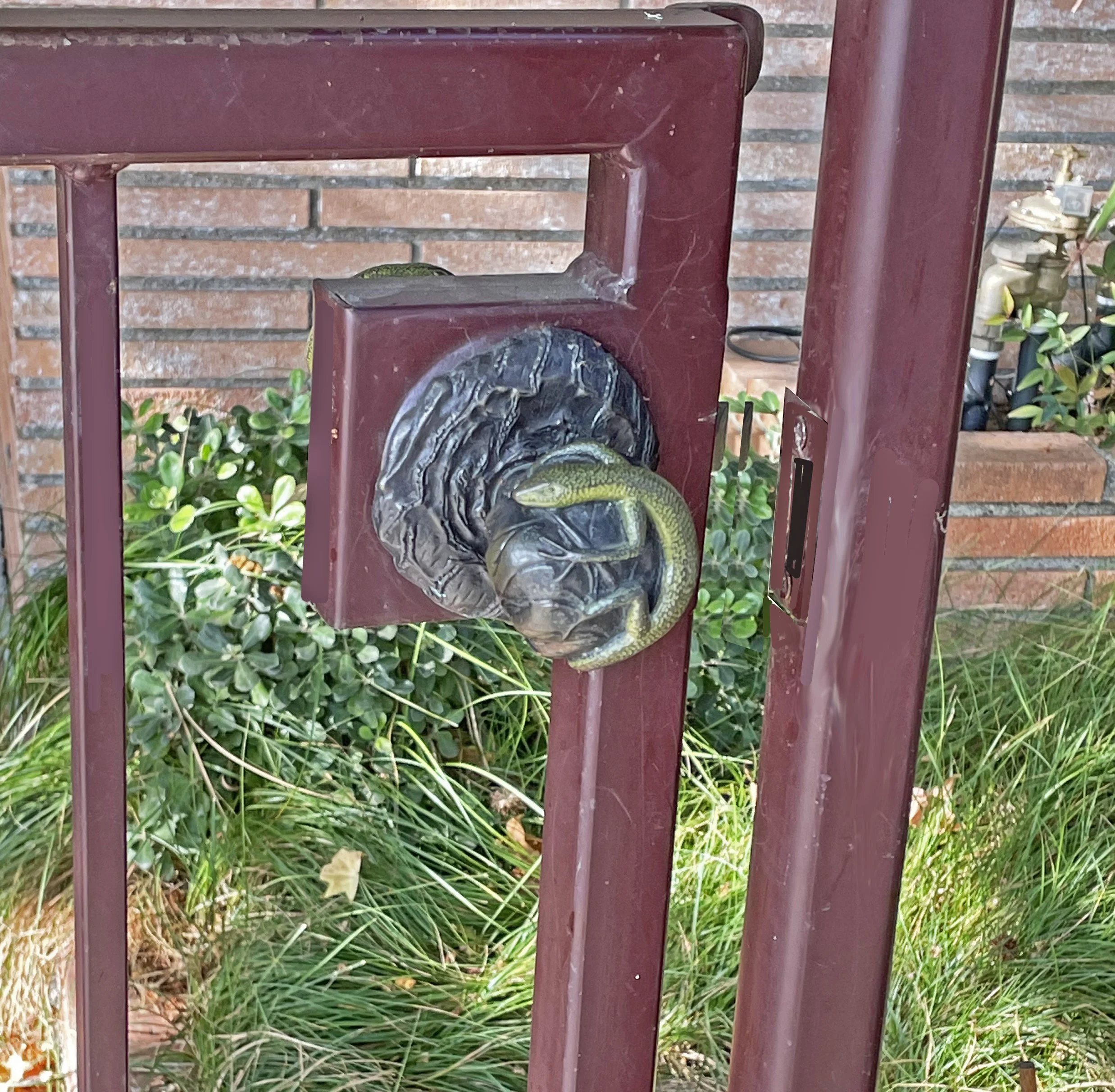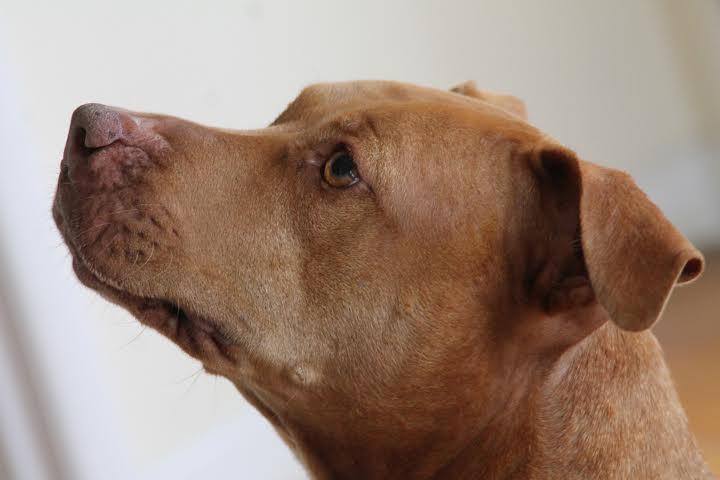Gate Hardware Essentials: Style Meets Function by Martin Pierce
The beauty of the Hollywood Hills, especially in the higher reaches near Mulholland and Hollyridge Drive, is a constant sensory pleasure that starts my day energized and calm. Having walked the hills for many years, I decided to mentally catalogue and digitally record some of the beautiful gateways that front these and other ridges. Whether it is a wooden gate, one of wrought iron filigree, a driveway gate, or a garden gate, all are enhanced by the foliage native to these hills.
Entry Gates
Trumpet flowers and pink bougainvillea encase the custom bronze gate handles on this walnut-paneled entry. The gate’s keyed cylinder, gate lever, and thumb latch are used to activate a secure mortise lock. The large lizard functions as the gate pull, and the butterfly, when depressed with one’s thumb, retracts the deadbolt gate latch that keeps the gate securely closed even if the gate is not key-locked.
The mortise lock, made by Accurate Lock, also has an interesting toggle on the side that, when pushed in, prevents the lock system from locking but allows the gate to remain closed. When the toggle is released, the gate will automatically lock when closed. This is a sophisticated gate system that works well and allows the homeowner maximum control over security, depending on need, from popping out to trim the hedge to fully locking when leaving for longer.
On the reverse side, the locking system is activated by a lizard lever that retracts the tubular latch and by the Beetle turn-piece that unlocks the cylinder and mortise. Since the gate is solid wood and very heavy, it required three sets of 6-inch stainless steel butt hinges. The hinges may have been overkill, as we chose 316 marine-grade stainless steel, but this alloy provides exceptional tensile strength and easily supports the weight of the wide gate.
In the entry gate shown here, the lighter weight of the open wrought iron filigree allowed for a more customized and decorative hinge, also fabricated in wrought iron. It is difficult for this writer not to imagine Martin Pierce’s hardware as an alternative lever option, and the Grapevine lever seemed like a good candidate that I would have considered as a complementary style choice.
The garden entry gate below is gracefully framed by a mature Ficus, or Indian Laurel Fig, softened by a manicured Boxwood hedge. Though the gate itself seems almost secondary to the lush foliage, an entry knob from the Morphic or Ergo collections could serve as a jeweled accent, much like a pendant that completes a black dress.
Framed by cascading bougainvillea and set within a deep, keyhole arch, this garden gate reflects the Moorish and Spanish Colonial revival styles that found their way into the Hollywood Hills in the early 1900s, influenced by the nearby Theosophical Society’s Krotona colony. The carved wooden doors, inset with jewel-like circles of colored glass, suggest a mystical quality that distinguished hillside architecture of the time. For this post, I have superimposed one of our sculptural iguana pulls, a piece whose scale and detail echo the whimsical ornament favored in that era, inviting the viewer to imagine how hardware can transform a gate into art.
Not all gates need to be large or custom-made to make a statement. A neighbor of mine chose a simple iron gate, but with the addition of a friendly bronze lizard it was transformed into something both striking and refined. When the gate was first installed, the mailman, who was not fond of reptiles and was momentarily fooled by the realism of this Anole lizard, suffered a moment of panic before realizing the creature was cast in metal.
Anatomy of a bronze door handle--Part 2
Sketch is done and details as to how the sculpture will be attached to a door, how to design it so that it can be cast to allow wax and metal to properly flow through the mold and not weigh a ton, it is time to move on to the next step. (you can review the first steps here). To make the mold for the body a pliant silicon membrane over the outside of the body and the legs has to be built-up. At this stage you are also “gating” the mold by adding square rod sections to the body of the bird. The silicon will from a membrane around these rods and when these rods are later removed what is left is a hollow or void through which the hot wax is poured . The mold is strengthened by being housed in a rigid metal case that keeps it true to form. Once the mold is complete it is literally cut down the middle and opened up to remove the rods and the result is a hollow replica of the birds body with funnels that have been created through which wax and later bronze can flow.
The next step is to pour molten wax into the hollow mold through the gates and slosh it around, coating the inside of the mold with liquid wax. When the wax is dry, the mold is carefully opened and the wax body is removed with the gates or protrusions attached.
We now have a one piece wax bird replica that is hollow inside and we need to turn it into a bronze piece that is hollow.
We cut around the birds legs and around a bit of his stomach to create a hole in the cavity of the wax body; we are going to cast the feet, stomach and wings as separate pieces. What we are left with is 4 parts of our bird, all in wax. Each wax piece is dipped in a clay like substance similar to the way we created the rubber mold, building up a clay slurry over each part of the bird to create a plaster like “shell” for each piece. When dry this slurry becomes rigid and forms a casing. With the bird body we will pour the slurry inside the hollow wax body and also coat the outside of the body so that, when fired, both the inside and outside will become a hollow ,walled shell. These "shelled" pieces are then baked in a kiln that will make them very rigid and strong. The heat causes the soft wax to melt out and collect at the bottom of the kiln, hence the expression "lost wax". Actually, not really lost but rather recycled. Even artists in ancient times recognized the value of re-using and recycling products.
All of these steps will result in a beautiful piece of functional art that can be used as a door pull to create an extraordinary entrance to a business or home, or enjoyed as wall art. This will become evident in our final post on the sculpting and casting process for this particular piece of architectural hardware.
You can view our entire collection of custom hardware at www.martinpierce.com.
Gone to the dogs!
The past couple of weeks have found us taking a respite from the mountains of work and sharing with you photos and recaps of some of our "lazy, hazy, crazy days of summer". But, sadly, it is time to get back to work. Before that we wanted to share with you another fun project: We recently celebrated a birthday (but I will not say which birthday as we do value our friendship) with our very dear friend Tracy. As our gift to her Martin carved a sculpture of her dog Dale, who is a 3 legged wonder and her loving companion. The gift was a very pleasant surprise for her and one that I know she cherishes.

If you knew Dale you would understand what a spunky and funny and loving dog he is. And while he may be a tad challenged by having 3 legs he is an extremely agile canine and could give us two-legged humans a run for our money any day. Dale was started from one large block of wood although Martin did have to add a separate piece for the tail for, if it had it been from the same block the end grain would have made this section too fragile. The wood he chose was Alder as it is a reasonable wood to carve and it has little grain allowing Martin to paint on Dale's coloring.
As we mentioned in an earlier post, Martin is thinking about sculpting our dog Iris. Iris' sculpture will focus only on her head. But just to be clear, there is nothing wrong with her body (unlike her human companions, Martin and I) as she has beautifully defined muscles and a generally athletic physique. To begin the process Martin studies photographs that will become drawings that are then properly scaled so that they can be traced onto a block of wood.
We were wondering if any of our readers have any suggestions for a suitable wood. We are thinking of walnut, which carves beautifully but the dark brown color will fade to a golden color over time. Or perhaps white oak that, despite its name, is light brown in tone. We hope you enjoy our sculptures. As you may be aware, the process of creating a sculpture and a bespoke piece of architectural hardware is quite similar. To view our entire collection of custom hardware please visit our site at www.martinpierce.com.

